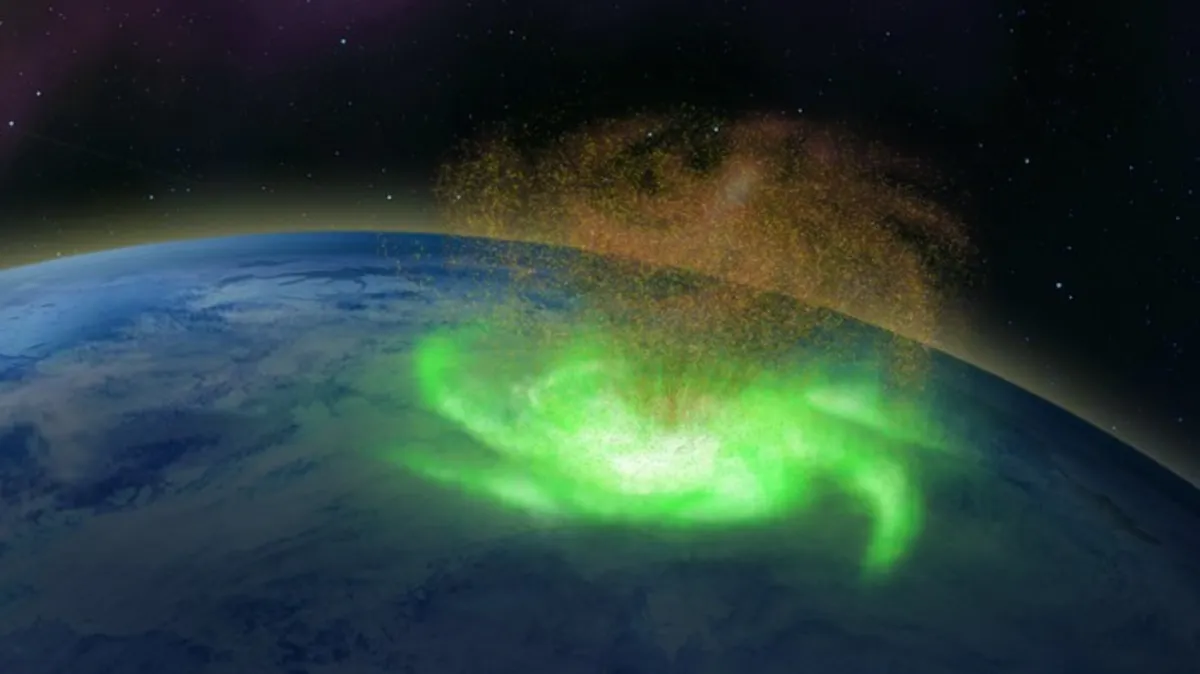
In a groundbreaking study, researchers have shed light on a rare hurricane that occurred high above the Earth's North Pole in 2014. This extraordinary phenomenon, known as a space hurricane, unleashed surprising and intense space weather effects, similar to those experienced during significant solar storms, despite the sun being in a notably quiet phase that day. The report provides the first comprehensive analysis of this nearly eight-hour tempest, originally documented on August 20, 2014.
The findings reveal that the 2014 space hurricane had a profound impact on Earth's atmosphere. It disrupted GPS signals, shook the Earth's magnetic field, and enriched the upper atmosphere with additional electrons. Lead author Sheng Lu, a scientist at the Institute of Space Sciences at Shandong University in China, emphasized the significance of the study: “Our study demonstrates that space hurricanes can trigger significant space weather effects, even during what are generally viewed as extremely quiet periods.” This research was published in July in the journal Space Weather.
The 2014 space hurricane, which was first formally described in 2021, was initially detected by the U.S. military's DMSP F17 satellite, responsible for monitoring space weather conditions. Shortly after its detection, the European Space Agency's Swarm B satellite traversed a nearby area, collecting vital data that confirmed the storm's structure and size. According to the new study, the hurricane measured over 620 miles (1,000 kilometers) in diameter and swirled over the polar cap, a high-latitude region where Earth's magnetic field channels solar and cosmic particles into the atmosphere.
Similar to its atmospheric counterpart, the space hurricane possessed a calm center, or eye, and exhibited swirling spiral arms visible in satellite observations. However, instead of producing howling winds and torrential rain, it propelled streams of high-energy electrons into the upper atmosphere. Although these electrons are invisible to the naked eye, space hurricanes can be detected by satellites and sensitive ground instruments due to the glowing, spiral-shaped auroras they generate.
Data collected from multiple spacecraft and geomagnetic stations in Greenland and the Canadian Arctic revealed disruptions in GPS signals, fluctuations in the magnetic field, and increased electron densities. These effects can significantly interfere with satellite navigation, communications, and radio transmission systems. The extensive measurements allowed researchers to reconstruct the storm in unprecedented detail, something that had been unattainable in previous decades.
Since the late 1960s, scientists had theorized the existence of space hurricanes, but lacked the necessary tools for confirmation. John Foster, a research scientist at MIT's Haystack Observatory, recalled witnessing a similar event over 50 years ago, noting, “What makes this event really special is the wide variety of instrumentation that was available in space to observe this phenomenon.”
Initially considered a rare anomaly, the 2014 space hurricane has paved the way for further exploration into this fascinating subject. Recent follow-up studies have indicated that these storms are more common than previously believed and can occur in both hemispheres, typically during summer months, with occurrences potentially reaching up to 10 times a year.
This research not only enhances our understanding of space weather but also underscores the importance of ongoing studies in the realm of space science. As technology continues to advance, scientists are better equipped to investigate these intriguing phenomena, opening doors to new discoveries and insights.